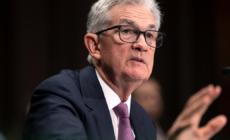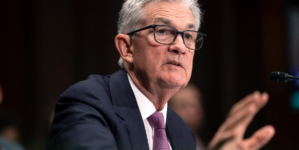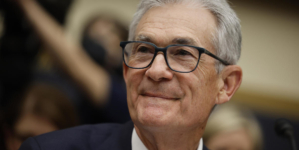-
Are Goff & St. Brown one of the NFL’s top 5 QB-WR duos this season? | First Things First - 13 mins ago
-
Job scams on the rise. Here’s how to protect yourself. - 15 mins ago
-
Man accused of fatally stabbing woman in 1992, dumping body in vacant lot - 20 mins ago
-
Fans Want Donald Trump to Change Commanders Back to Redskins After Winning Presidency - 38 mins ago
-
3 people arrested and charged in connection with Liam Payne’s death, Argentinian authorities say - 40 mins ago
-
Metrolink CEO’s home is among those destroyed in Mountain fire - 45 mins ago
-
Kamala Harris supporter Sally Field trashes campaign sign after Donald Trump victory - 49 mins ago
-
2024 College Football Week 11 action report: ‘Impressive’ Indiana is ‘public darling’ - 57 mins ago
-
Fed Chair Jerome Powell says he won’t resign if Donald Trump asks him to step down - 59 mins ago
-
Adam Fravel convicted of suffocating, killing ex Madeline Kingsbury, hiding her body - about 1 hour ago
The Federal Reserve holds interest rates steady. Here’s the impact on your money.
Federal Reserve officials said they are leaving the central bank’s benchmark interest rate unchanged, a decision widely expected by economists after recent inflation data showed that prices are still increasing at a faster pace than the Fed would like. Even so, most officials are predicting three rate cuts later in 2024.
Policymakers on Wednesday said that while inflation is coming down, it “does not expect it will be appropriate” to cut rates until the bank is confident inflation is moving toward its 2% goal.
The Fed on Wednesday said it is maintaining the federal funds rate in a range of 5.25% to 5.5%. Still, most members of the Federal Open Market Committee are still projecting three rate cuts later in 2024, matching the bank’s earlier forecast for the number of rate reductions this year, according to the Fed’s Summary of Economic Conditions.
Many inflation-weary consumers are eager for a reprieve from high borrowing costs, the result of the Fed’s 11 interest rate hikes starting in early 2022. While inflation is rapidly cooling, it is hovering at slightly above 3% on an annual basis, higher than the Fed’s goal of 2%.
That’s led the Fed to pause any move to ease rates, with Chair Jerome Powell previously saying that the central bank doesn’t want to cut prematurely and risk a flare-up of inflation.
Americans may need to wait until the Fed’s June meeting, or even later, for the first rate cut since March 2020, when the pandemic shut down the economy and the central bank slashed rates to spur spending, experts said.
“Currently, cuts don’t seem likely to happen until sometime in the second half of 2024,” noted LendingTree economist Jacob Channel in an email. “Indeed, we may not see rates fall until the fall.”
Fed interest rate 2024 and its impact on your money
With the Fed keeping rates unchanged, borrowing costs will remain high. That will impact everything from credit card rates to loans for auto purchases or real estates.
The average APR on a new credit card is currently 24.66%, with March marking the 24th month out of the last 25 months when APRs have increased, LendingTree credit analyst Matt Schulz said in an email. Some credit cards may increase their APRs after today’s announcement, he added.
“I expect the increases to be pretty small, barring unexpectedly bad economic news, but after two years of upward movement, even tiny increases are definitely unwelcome,” Schulz said.
One bright spot for consumers: high-interest savings accounts and CDs. Some CDs are offering rates as high as 5%, for instance, noted DepositAccounts.com banking expert Ken Tumin.
Even so, some banks are cutting their rates in anticipation of a Fed cut later this year — and the expectation that the central bank has no more hikes in store for 2024, he added.
Source link






























